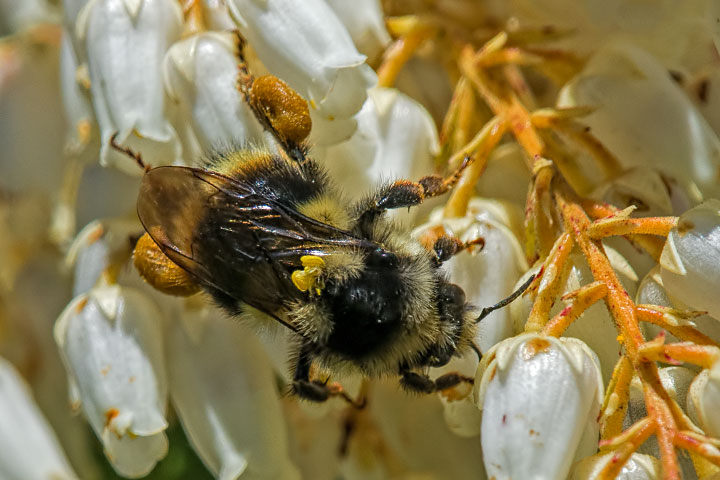Bumble Bees collect nectar (to feed their own activities and make honey) and pollen (to feed their youngins). The nectar is carried back to the hive in the honey sack, and, normally, the pollen is carried on the bumble bee’s hind legs in what is referred to as the pollen baskets.
In this view of a Bombus bifarius, the two large orange globs of pollen on the hind legs (upper left) are obvious. What is not as striking are the two yellow pollinia on the back of the bee’s thorax.
The pollinia are also made of pollen, but rather than being a diffuse powder, each is a packet of pollen from a single floral anther that the flower glues to the back of the bee.
As far as I know, the only flowers that produce pollinia around here are wild orchids. Consequently, the presence of pollinia on this bumble bee suggests that there are already wild orchids in local woods. I shall look for them. My guess is that the orchids would be Fairy Slippers, and I know just were to look, despite it being somewhat early.
This is the first time that I have seen a bumble bee both with its pollen baskets full and pollinia on its back.


I looked today at a spot on the highway near Metaline Falls where I have seen Lady Slipper’s blooming in at least two previous years. They were not yet in bloom. And it is perhaps warmer there than here and should be a few days ahead of orchids in the Koots.
Doug, Lady’s Slippers bloom somewhat later than do Fairy Slippers.
We saw our first calypso orchid in early bloom yesterday down in the Clearwater Canyon, about 10 km north of Clearwater. Extraordinarily early this far north, but really not surprising given the praeternaturally warm weather of the past several months.
Trevor, and I went out this morning and there they were (next posting).